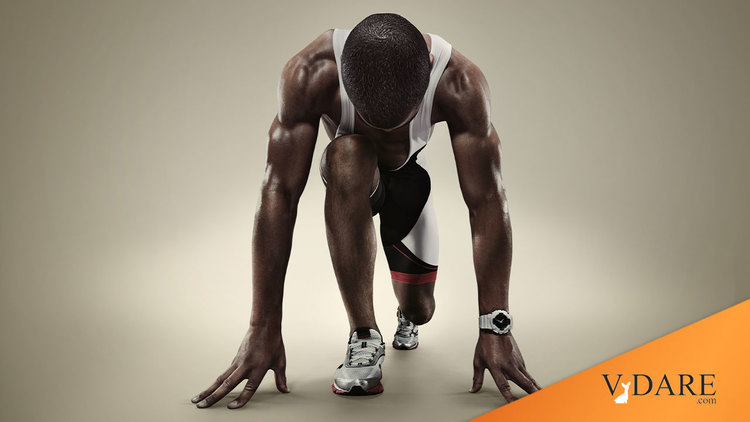Q. What’s the oddest thing about Jamaican 100 meter sprinter Usain Bolt?
A. Although Bolt epitomizes West African-descended sprinting talent, he has the face of an East African distance runner. (Here’s a picture of Bolt with his more conventional-looking Jamaican rival Yohan Blake.) Nobody seems to know why Bolt looks like an immense Kenyan.
Q. How much of the track success of former British colonies like Jamaica and Kenya originates in British Chariots of Fire-style sporting culture?
A. A fair amount. It's taken ex-colonies of other European countries much longer to catch on. For example, the Dominican Republic, which isn't lacking in athletic talent as its baseball success shows, has only recently become an Olympic power in the long sprints and hurdles.
On the other hand, ex-colonies tend to take what they like and forget the rest. For instance, although the South Asian countries remain heavily influenced in some ways by the British Raj (for example, India represents one of the world’s leading concentrations of P.G. Wodehouse fans), South Asians are the world’s least interested in sports– except for that most Wodehousian of English games, cricket.
Q. Some black women took to Twitter to criticize gymnast Gabby Douglas for not having expensively processed hair like they do. In contrast, black women sprinters, such as 400m gold medalist Sanya Richards-Ross, often wear extravagant hairdos, jewelry, or nails. (Remember Florence Griffith-Joyner’s and Gail Devers’s jeweled claws?) How come?
A. Compared to gymnasts (or to swimmers or long-distance runners), sprinters have a lot of time on their hands. Endless workouts don’t help much. For example, to get ready to win four gold medals at the 1984 Olympics, Carl Lewis worked out eight hours per week (not per day, but eight per week). Thus, Lewis had time to become a disco star in Japan, and Richards-Ross appears to have had everything imaginable done to her hair, plus that of whichever lady in India grew her weave.
Personally, I am happy that sprinters don’t have to train five hours per day like Michael Phelps did. I like the old tradition of the sportsman, the notion that competing can be part of a non-monastic life.
Q. You say that Southern California's long history of sports success is suspect due to its proximity to Muscle Beach. Hey, America’s sweetheart, 200m runner Allyson Felix, grew up in Southern California!
A. I think it’s fair to say that Felix has, over the years, resisted more temptation than most people could withstand. She’s twice lost the 200m Olympic gold medal to massive Jamaican women. So far, she hasn’t totally Jeterized herself. While Jeter signed up with John Smith, the Dark Side of sprint coaching, Felix recently teamed with Bob Kersee, who has somehow remained the respectable face of muscularity over a long career coaching his wife Jackie Joyner-Kersee, his in-law the late Florence Griffith-Joyner, Gail Devers, and Shawn Crawford.













